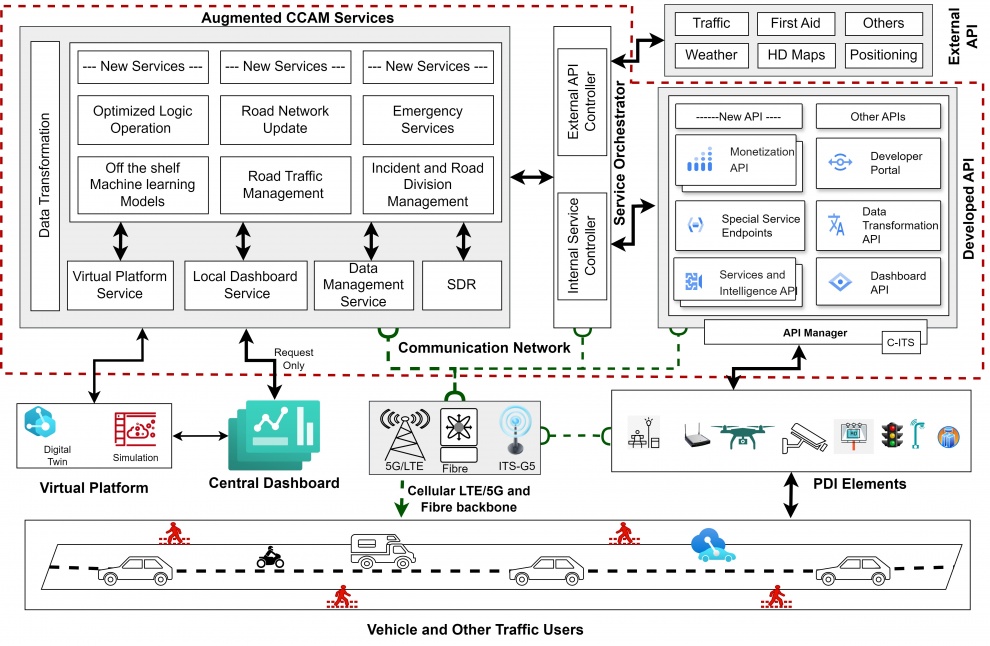Last modified on September 30, 2024

AUGMENTED CCAM Service Architecture
The integration of automated driving/CCAM with V2X communication elevates road safety and traffic effectiveness: vehicular communication systems broaden the scope of perception for automated vehicles beyond the capacity of their sensors and facilitate real-time message exchange among vehicles and infrastructure.
The fusion of Physical and Digital Infrastructure (PDI)1 with CCAM facilitates a range of services like alerts for road construction, safeguarding vulnerable road users, handling emergencies, and managing traffic dynamically. Nevertheless, with the emergence of new PDI components, to uphold existing services while also creating novel ones, there is a need for a new CCAM service architecture. The Augmented CCAM (ACCAM) project has designed an innovative service architecture for CCAM that employs the capabilities of MEC and AI-enabled services supporting C-ITS.
This architecture proactively anticipates future expansions by creating an open framework for easy growth, and adapts to dynamic scenarios, rapidly reconfiguring services for unexpected events or updates. This ensures the architecture can evolve with changing C-ITS needs. The ACCAM architecture has been instantiated in different test sites using various infrastructures and parameters.
The ACCAM architecture significantly enhances CCAM by integrating modular services, edge computing, and versatile APIs, thereby enabling efficient traffic management, enhanced vehicle safety, and real-time data utilization. Its adaptability across diverse environments and seamless integration of third-party services also promise broader applications in smart cities, transportation networks, and emergency response systems.
Find out more about ACCAM architecture, including the functional descriptions of the major components of the architecture.
1 Elements like roadside sensors, traffic signals, digital twins, GPS systems, and data centers are collectively referred to as PDI.


